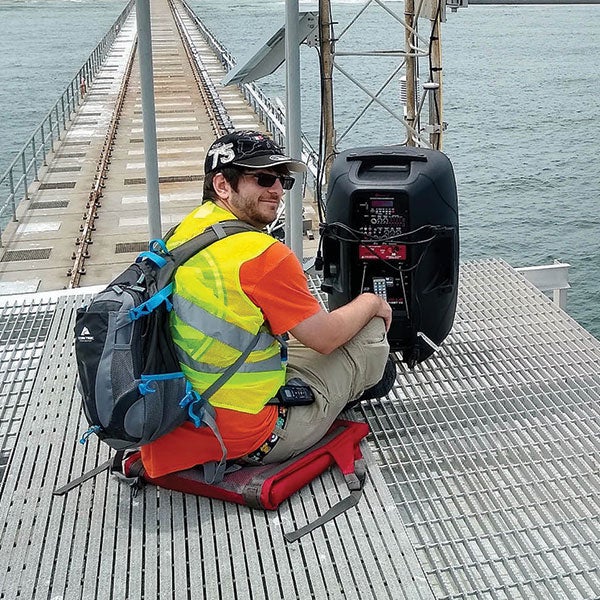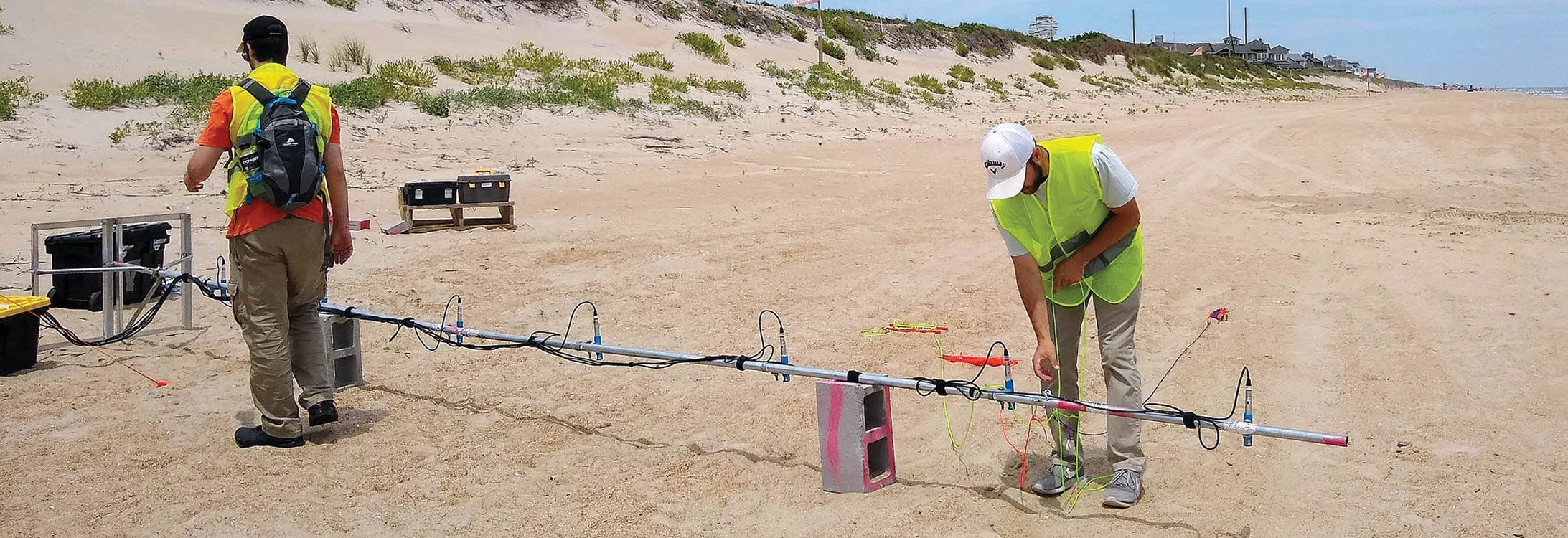ECU research could help save lives of military personnel
Teresa Ryan, an assistant professor in the East Carolina University Department of Engineering, has received a $370,000 grant to continue her efforts to help protect military personnel.
Ryan has been studying sound propagation in cooperation with Catholic University for the last four years as part of a project funded through the Office of Naval Research. For this latest grant from the Navy, Ryan is the lead researcher.

Student works on setting up equipment.
The goal is to improve a numeric model that will inform commanders how close a ship can get to an enemy shoreline without being heard based on the atmospheric and sea conditions. That’s important not only to protect the ship from enemy fire but also to protect the lives of those onboard as well as assault personnel as they prepare to storm the beach.
“The person driving the boat needs to know how close to get to shore before the special ops people have to swim. Do they have to swim the last 75 meters or do they have to swim the last 500?” Ryan said. “That’s a huge operational difference for the people in that tactical situation, and ultimately this technology gives that power to the person making those tactical and operational decisions in the field, to give them the additional information to preserve mission integrity and warfighter safety.”
The previous grant had Ryan and her students testing the effects temperature, humidity, wind and seas had on the distance sound travels. The group traveled to such places as the Outer Banks, Aurora and the Chowan River to conduct the tests. She said the goal of that data was to test if the numeric model had been improved.
“The results were promising. The results warranted moving ahead in the effort,” Ryan said.
That’s the reason behind this latest grant that will involve far more sound testing in the field.
“It’s funding an effort to collect a database of measurements that represent a wider range of atmospheric conditions,” Ryan said. “We want to capture data when it’s hot, when it’s cold, when it’s windy, when it’s humid, when it’s not humid. We’re trying to capture a broad database of atmospheric and seascape conditions, so we have a better pile of data to proof the improvements in the numeric model.”
Work on the one-year grant began Feb. 1. Ryan plans on enlisting the help of 10 to 11 students, with sophomore Faith Cobb serving as the student team leader.
“I really like this work because it does have this military connection, and I get to show undergrads how all this math and all this hard work that they are doing actually applies and has some sort of measurable benefit. Why are we doing all this math? It’s because we can answer important questions with it,” Ryan said.
